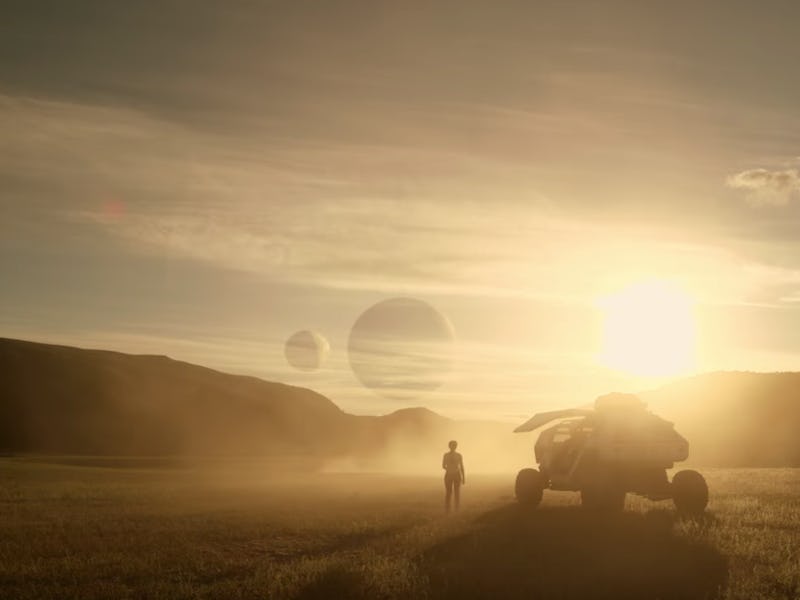'Lost in Space' Writer Reveals Robinsons' Location: a 'Goldilocks Planet'
It could be one of many planets.

The Robinson family on Netflix’s new sci-fi series Lost in Space is just as baffled by their uncannily perfect new home planet as the rest of us are. In the series, Maureen expresses her amazement, calling it a “Goldilocks planet” and echoing the words of Lost in Space writer Burk Sharpless, who used the same term to describe the family’s fictional location on the show in a recent interview. Both borrow the term from the most hopeful of astronomical theories.
In an interview with Express, Sharpless said, “Our lost planet is a term in science called a Goldilocks Planet — it’s a planet that’s actually fit for human life.” What made Goldilocks such an iconic fairy tale character is that she managed to find the bowl of porridge that was not too hot and not too cold. Likewise, for celestial bodies, one earns the ‘Goldilocks’ designation if its environment is “just right” for life as we know it. NASA defines a Goldilocks planet as “an Earth-like planet orbiting its star in the ‘Goldilocks zone’ — that is, at just the right distance for liquid water and life.” While scientists haven’t found a perfect substitute for Earth just yet, they’ve already come pretty darn close during their hunt for exoplanets.
Most of the exoplanets we know about were found by NASA’s Kepler spacecraft, which launched in 2009 and has since identified about 2,700 exoplanets, some of which are in the “Goldilocks” or “habitable” zones in their solar systems. One compelling example is Proxima B, a potential Goldilocks planet 4.25 light-years away orbiting Proxima Centauri, the Sun’s closest neighboring star. In 2017, scientists showed that it might support liquid water and a habitable atmosphere. In 2016, scientists found Wolf 1061c, also in the Goldilocks zone of its home star 1016c, only 14 light-years away. There are over 50 candidates in total.
One of the biggest obstacles in identifying whether any exoplanet is truly a Goldilocks planet is the fact that scientists, unable to examine the atmosphere and surface of these planets up close, must rely on indirect methods. A technique called transit spectroscopy, by which scientists learn about the makeup of a planet’s atmosphere (and by inference, its surface) by observing the light it reflects from its nearby star, is their best bet for doing so.
Our chances of finding an elusive Goldilocks planet are about to be higher than ever, now that NASA, after a series of false starts, is about to launch TESS, its follow-up to Kepler. TESS, which stands for Transiting Exoplanet Survey Satellite, is expected to monitor up to 200,000 stars in the Milky Way in search of exoplanets and is expected to find 20,000 exoplanets in the process. Some of those are bound to be in their solar systems’ Goldilocks zone. (Be warned: Spoilers ahead!)
Unfortunately for Maureen Robinson, her new home is likely not a Goldilocks planet after all. Unlike Earth, which revolves around its single sun, the Robinsons’ planet orbits a binary star comprising one star and one black hole — which doesn’t necessarily preclude it from being just right in terms of temperature and atmosphere but certainly makes it less likely to have an environment exactly like Earth’s.